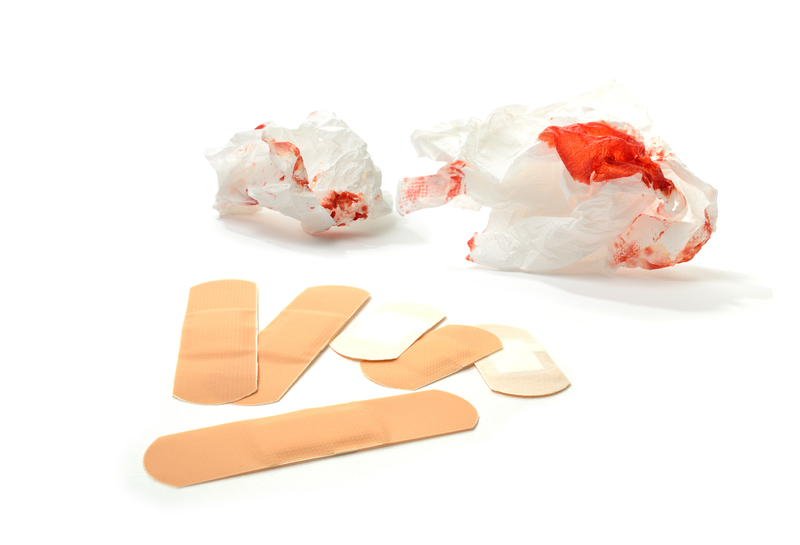How to Effectively Keep Mold Out of Your Bathroom
Posted on 19/09/2025
How to Effectively Keep Mold Out of Your Bathroom: An In-Depth Guide
Bathrooms are notorious breeding grounds for mold, thanks to their constant humidity, warmth, and organic material like skin cells and soap scum. Ignoring mold in your bathroom doesn't just look unsightly--it can damage your home and negatively impact your health. If you're searching for tried-and-tested ways on how to keep mold out of your bathroom, you're in the right place. This comprehensive guide will provide you with practical steps, pro tips, and crucial insights to maintain a fresh, healthy, and mold-free restroom.

Understanding Mold: The Basics
Why Does Mold Thrive in Bathrooms?
Before tackling the problem, it's essential to understand why bathrooms are a hotspot for mold growth. Mold reproduces through microscopic spores, which are commonly present in the air. As soon as these spores find the right combination of moisture, warmth, and organic matter, they begin to thrive. Bathrooms (especially those with poor ventilation) are the perfect environment for mold to take hold and spread--including on grout, tiles, ceilings, and even inside cabinets.
Common Types of Bathroom Mold
- Aspergillus: Usually grows on damp walls and produces musty odors.
- Cladosporium: Found on painted surfaces and in fiberglass air ducts.
- Stachybotrys Chartarum (Black Mold): The most infamous and potentially harmful, often appears on cellulose-rich surfaces like wood or drywall.
Top Preventative Measures: Keeping Mold Out of Your Bathroom
Regular maintenance and a few lifestyle adjustments can drastically reduce mold risks. Here's your step-by-step guide on how to prevent mold in your bathroom:
1. Ensure Adequate Ventilation
- Always use an exhaust fan or open a window while showering and for at least 30 minutes afterward.
- Install a high-quality bathroom fan if you don't already have one; size it appropriately to your bathroom's square footage.
- Leave the bathroom door slightly ajar after use to promote airflow.
Bathrooms without good ventilation are almost guaranteed to accumulate moisture on surfaces. Ventilation is the single most effective weapon in your fight to keep mold at bay.
2. Keep Surfaces Dry
- Wipe down shower walls, mirrors, and sinks with a squeegee or microfiber cloth after each use.
- Always dry up water spills, especially around the tub edges and sink.
- Don't allow wet towels or bath mats to stay bunched up--hang them up to dry right after use.
3. Repair Leaks Immediately
- Check for dripping faucets, leaky showerheads, or running toilets.
- Inspect under sinks for pipe leaks and in the area around the toilet and tub.
- Fix any signs of water damage right away--even minor leaks can lead to major mold issues over time.
4. Clean Regularly and Use Mold-Resistant Products
- Scrub tiles, grout, and other susceptible surfaces with an anti-fungal bathroom cleaner at least once weekly.
- Consider using mold-inhibiting paint or add mold-resistant additives to your paint, especially on ceilings and walls.
- Replace old caulking and grout with mold-resistant products to prevent moisture from seeping in.
5. Reduce Excess Humidity
- Use a dehumidifier in bathrooms that don't ventilate well, especially in humid climates.
- Monitor humidity with an inexpensive hygrometer; keep levels below 50%.
6. Eliminate Clutter
- Limit items in the shower or tub: shaving cream, shampoo bottles, loofahs, etc., can all trap moisture and provide a safe haven for mold.
- Opt for a streamlined storage system and regularly purge rarely used items.
7. Opt for Quick-Drying Materials
- Choose synthetic shower curtains over fabric, or select those labeled "mildew-resistant."
- Avoid carpeting in bathrooms--it traps moisture and encourages mold; use washable, quick-drying mats instead.
Natural and Chemical Solutions: How to Treat and Prevent Bathroom Mold
Natural Solutions
- White Vinegar: Undiluted white vinegar can kill up to 82% of mold species. Spray it onto affected areas, let it sit for up to an hour, then scrub and rinse.
- Baking Soda: Mix with water to create a paste; it's gentle on surfaces but tough on mold.
- Hydrogen Peroxide: A 3% solution sprayed onto spots is effective for disinfection and eliminating fungus.
- Lemon Juice: The acidity of lemon can help break down mold but works best on lighter stains.
Chemical Solutions
- Commercial Mold Cleaners: Cleaners designed for tile, grout, and bathroom surfaces can quickly eliminate and prevent recurrence.
- Bleach Solution: For stubborn infestations, a diluted bleach solution (1 part bleach to 10 parts water) can sterilize nonporous surfaces. Use with caution and ensure the area is well-ventilated.
*Always test a small, inconspicuous area with your chosen solution before full use. Wear gloves and a mask to avoid exposure.
Smart Bathroom Design for Mold Prevention
If you are renovating or building a new home, proactive bathroom design decisions will make a significant difference in mold prevention.
Key Design Features
- Seamless Surfaces: Large tiles, sheet vinyl, and solid-surface countertops have fewer gaps or grout lines where mold can take hold.
- Proper Sloping: Ensure floors and shower areas are sloped to direct water toward drains, preventing standing water.
- Quality Ventilation: Fans should vent to the outdoors, not the attic, to prevent hidden mold problems elsewhere in the house.
- Natural Lighting: Add windows or skylights. Sunlight is a natural enemy of mold; UV rays help to inhibit its growth.
- Accessible Plumbing: Design cabinetry and wall panels with access points for easy inspection and leak repair.
Troubleshooting: Spotting and Addressing Early Signs of Bathroom Mold
Even with all preventative measures, mold can sometimes sneak in. Early detection is vital for effectively keeping your bathroom mold-free.
Early Signs of Bathroom Mold
- Musty Odors: One of the earliest signs; if your bathroom smells earthy or damp even after cleaning, investigate further.
- Discolored Grout or Tiles: Black, green, or brown spots appearing on tiles, grout, or ceilings.
- Bubbling Paint or Wallpaper: Indicates trapped moisture--a red flag for concealed mold.
- Persistent Allergy Symptoms: Mold spores can trigger sneezing, headaches, or itchy eyes in sensitive individuals.
How to Clean and Remove Mold Safely
- Wear protective gloves, goggles, and a mask.
- Remove and discard moldy caulk, sealant, or drywall if necessary.
- Clean exposed surfaces with your chosen mold remover, scrub gently, and rinse thoroughly.
- Once dry, use a mold-resistant primer and repaint or recaulk the area with mold-inhibiting products.
Professional Help: When to Call an Expert
While most bathroom mold can be tackled with DIY methods, there are times when it's safer and more effective to call a professional:
- The mold covers an area larger than 10 square feet.
- You find mold inside wall cavities, under flooring, or near HVAC vents.
- You have recurring mold despite thorough cleaning and preventative steps.
- You or anyone in your home has health issues that may be exacerbated by mold exposure.
Expert mold remediation ensures a thorough, lasting solution using specialized tools and products, and professionals can identify the source of chronic moisture problems.
Summary: The Ultimate Routine to Keep Bathroom Mold Away
- Ventilate every time you use the bathroom, and keep surfaces dry.
- Fix leaks and clean regularly with mold-fighting products.
- Keep humidity low and declutter shower spaces.
- Choose mold-resistant materials and design features during renovations.
- Act quickly at the first sign of mold, and seek professional help for extensive issues.

Frequently Asked Questions About Keeping Your Bathroom Mold-Free
Q: How often should I clean my bathroom to prevent mold?
A thorough cleaning once a week with anti-mold products is recommended. High-use bathrooms may require twice-weekly cleanings.
Q: What's the best way to remove mold from grout?
Apply a paste of baking soda and water or a commercial grout cleaner. Scrub with a stiff brush, rinse, and repeat as needed. Re-grout badly affected areas with a mold-resistant product.
Q: Are there natural alternatives to chemical mold treatments?
Yes. White vinegar, baking soda, and hydrogen peroxide are effective, affordable, and eco-friendly for most non-porous surfaces.
Q: Can mold in the bathroom make you sick?
Yes. Mold exposure may cause allergic reactions, worsen asthma, and increase respiratory symptoms, especially in children, the elderly, and those with immune issues.
Final Thoughts: The Long-Term Benefits of a Mold-Free Bathroom
Implementing these bathroom mold prevention strategies isn't only about aesthetics--it protects your health, preserves your property value, and makes cleaning a breeze. By maintaining proper ventilation, reducing moisture, and acting quickly at the first sign of trouble, you can ensure your bathroom stays fresh and mold-free for years to come.
Don't wait until visible mold appears: Invest a few minutes each day into mold prevention, and you'll save yourself major headaches--and repairs--in the future.




